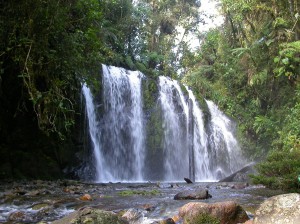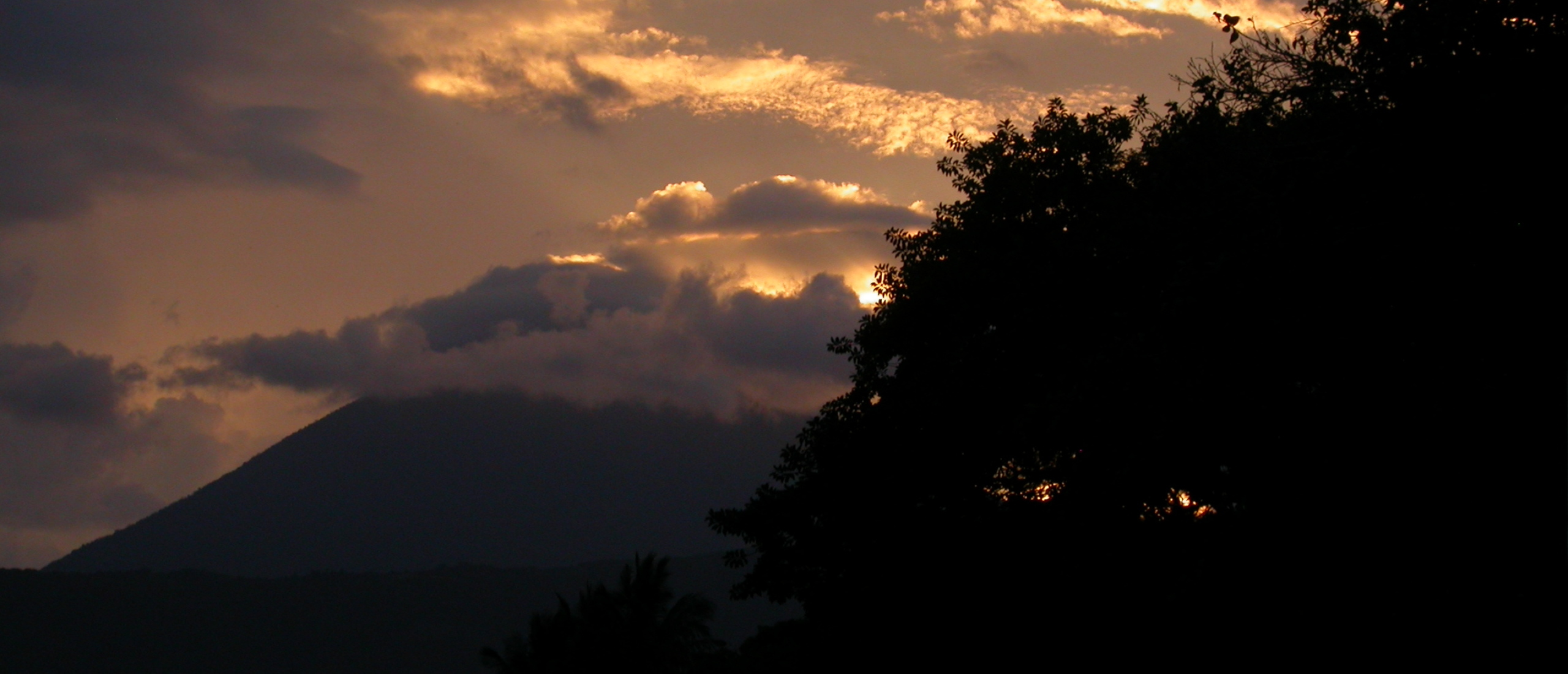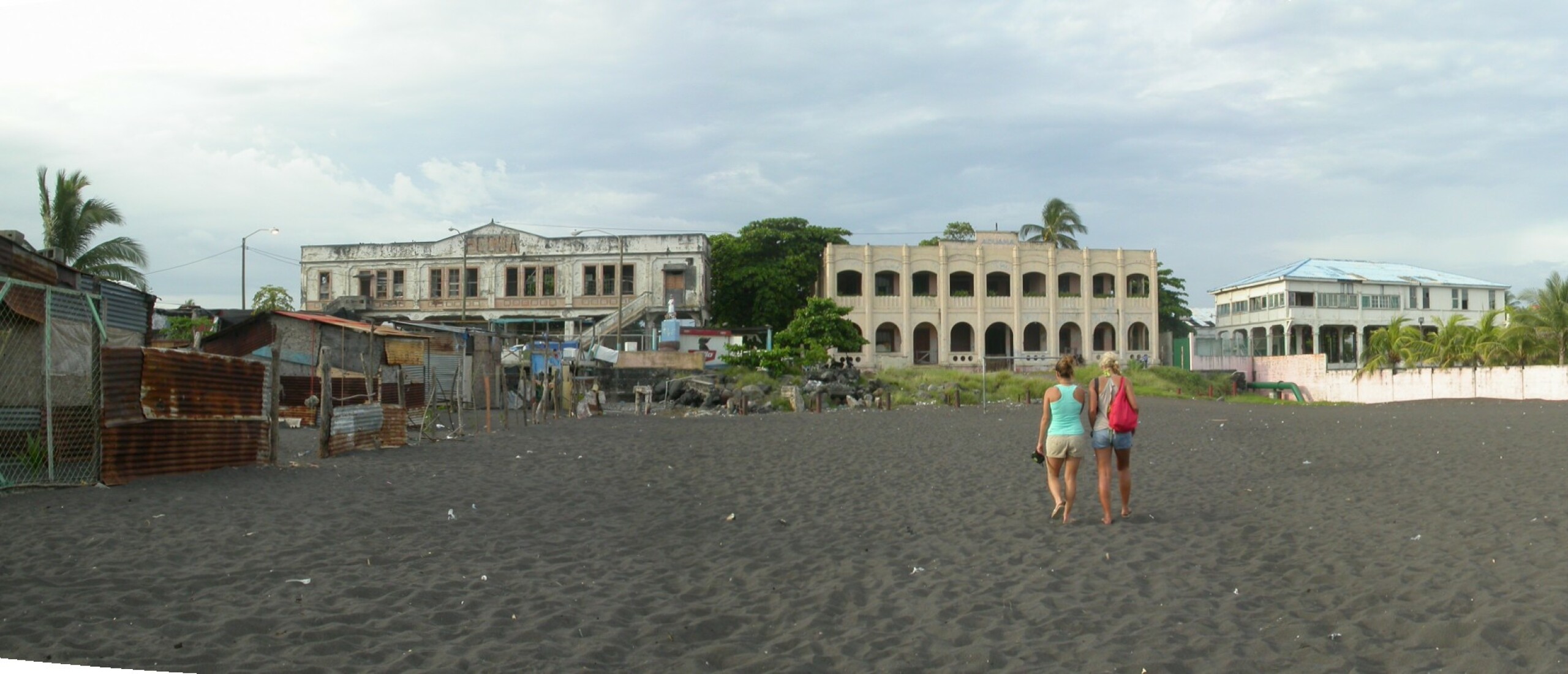
Cobán, Alta Vera Paz I am now listening to the rain pouring down on the tin roof of the historic Posada, in Cobán, a highland town in Alta Vera Paz, a new region for me, and one much frequented by my great grandfather George Charles Champion in 1879 – 1880. I left Antigua by high speed (literally, again!) shuttle bus, and much enjoyed the company during the six hour journey of my co-passengers, a Frenchman and his Guatemalan wife, two British girls and the Australian boyfriend of one of them, a very congenial bunch. As the others were all headed on beyond Cobán to the caves of Lanquin and the waterfalls of Semuc Champey, I found myself the only passenger leaving the bus in the town. However, there was not a moment to be lonely as my new hosts, Rob and Tara Cahill, were there to meet me. I had been introduced to them a couple of weeks before at the hummingbird feeders at the Finca El Pilar, and having heard the story of my unusual journey, they had very kindly offered to host me on this leg of my quest. I soon checked into my hostal, and with the help of a bottle of wine, the plans began to materialise. It turned out that both of Rob and Tara’s sons are keen, and I must say extremely skilled, birders, and they were both willing to act as my guides. The Cahill family, originally from Pennsylvania, have lived in Cobán for around ten years, and all are fluent in English, Spanish and Keq’chi, the indigenous language of these highland areas. The elder one, Peter, aged 17, was to act as my driver for the next three days, and I must say he did brilliantly on the EXTREMELY rough mountain roads we took, and gained more driving experience than one would normally expect a 17-year-old to have had. The following morning, he and I headed out towards the Biotopo del Quetzal, a protected area of cloud forest set aside specifically to protect the habitat of that almost mystical bird, the Resplendent Quetzal. One can do a number of hikes through the forest, but ironically one of the most reliable sites for the bird is in the garden of a small lodge right by the road. We, however, were unlucky, but we did find a sheet strung up with some splendid moths on it; clearly an entomologists’ moth trap! Inquiries revealed that this had been set up by Jose Monzon, one of my key contacts and one of the few people who have observed my chief target butterfly, Drucina championi, alive. We actually saw him leaving, without realising who he was, as we drove in! We resolved to return in the evening to request further information regarding that most special of all butterflies (to our family at least, it having been discovered by my great grandfather in 1880). Following our unsuccessful Quetzal attempt, we drove the short distance to our accommodation for the next two nights, the Posada de la Montaña del Quetzal, where we checked into our attractive bungalow, after which we set off on a quest to explore a region visited by GCC in 1879, Chilascó. Our route took us 12 km off the main road on a dirt track, passing through mixed pine/oak forest, to the village of Chilascó, where we were shown around by our excellent guide, Genaro, who first took us on a tour of the slightly scruffy village, even taking us into the school to show us a remarkable classroom block constructed of empty plastic drinks bottles, set in chicken wire and then plastered over. This eco-friendly way of making use of some of the vast amounts of plastic waste that litters many parts of the Guatemalan countryside was encouraging to see…and we were certainly the stars of the classrooms when we walked in!
 Genaro and Julio in front of the classroom made of plastic bottles
Genaro and Julio in front of the classroom made of plastic bottles
Following the tour of the village, Genaro fetched his seven-year-old son Julio, and we started the somewhat rough hike towards the remarkable waterfall of Chilascó, which claims to be the highest in Central America. The going along these tracks, especially in the rubber boots that I had hired, was hard going, but I am glad we did it as these horse and mule trails, completely churned up and muddy, are far more like the “execrable roads” that GCC so often refers to in his diaries than the modern roads we travel on today.
 GCC would have described this road as execrable
GCC would have described this road as execrable
After perhaps an hour of walking through mixed farmland, scrub and secondary woodland, we finally reached the ridge, where the cloud forest began. We then descended ever lower along the steep switchback trail, occasionally managing to glimpse these truly spectacular falls, until we finally reached the bottom of the cascade, and were able to gaze up in wonder at this natural marvel.
 Self, Julio and Genaro in front of the waterfall
Self, Julio and Genaro in front of the waterfall
Finally it was time to begin the steep and seemingly endless return climb, a slog which was punctuated by an interesting stop in a shelter built by the local village tourism association….it turned out the little Julio would have been an accomplished assistant of my great grandfather, GCC! No sooner had we sat down than he began to rip strips of bark off the half-rotted timbers of our shelter, revealing numerous unusual insects, which my great grandfather would have undoubtedly keenly added to his collections!
 Julio ripping off bark in a quest for insects
Julio ripping off bark in a quest for insects
The following morning, by which time we had been joined by Rob and Tara’s 15-year-old son John, who is already a highly skilled bird observer and expert on the calls of many Guatemalan species, we birded around the hotel grounds, which are remarkably bird-friendly, with Magnificent Hummingbirds buzzing around the trees, Hairy Woodpeckers tapping on the pine trunks, some beautiful Black-headed Grosbeaks soaking up the first rays of the morning sunshine, and around 35 other species, and then we descended gradually towards a fast-flowing river where John had taken some truly wonderful pictures of an American Dipper the previous afternoon. Our route took us along a row of stepping stones across the river, before dropping still further to another beautiful, though much smaller, waterfall, where we waited in vain for the Dipper. Little did I know while I experimented with shutter speeds as I photographed the falls with my beloved Nikon Coolpix 4500, which had served me so faithfully since 2004 and had taken more than 30,000 photographs, its unique twisting facility having proved so excellent for butterfly photography, was about to meet a watery end. We walked back along the trail, my guides almost skipped across the stepping stones, me following at a rather more sedate pace, and possibly due to being too careful (but more likely due to my usual lack of balance), halfway across I felt my foot go, and arms flailing in all directions, down I went, crashing into the water, completely drowning the camera, my binoculars AND my small rucksack which contained my passport, driving licence, bird book and several other vital objects….and all that for an American Dipper, which would not have been a new species for me, and which I did not see! Dipped for a Dipper!
 The Coolpix's last fling - fast shutter speed
The Coolpix's last fling - fast shutter speed
 The Coolpix's last fling - slow shutter speed
The Coolpix's last fling - slow shutter speed
Our plan to climb the nearby Cerro Verde was immediately put on hold, and the rest of the morning was spent dismantling the Nikon Coolpix screw by screw, drying out the soaking interior of the camera with tissue paper, laying all the parts out on our breakfast table, all in an attempt to resurrect the camera. Water had penetrated even between the lenses, into the view-finder, in fact everywhere in both halves of this remarkable camera. But even after all this work, when we replaced the battery and turned it on, there was not a flicker of life. Disappointed, we reassembled the entire camera, but found to our surprise that we finally ended with 12 extra screws at the end!!! Where they should have gone we are still not clear about! So I fear the Coolpix is dead, barring a miracle! Anyone out there who can repair Nikon Coolpix 4500s, please make contact!!! The binoculars were also in a parlous state, filled with moisture and droplets, and these too had to be immediately dismantled, but after some initial disappointment, I am glad to report that they seem to have almost completely recovered. Another “camera” I have, a Sony “Bloggie” also appeared to be dead, but it gradually recovered, at first producing pictures that appeared to have been taken IN the cloud forest, but it now appears to have survived its ordeal quite well. The passport and other documents, sealed as they in were in a waterproof plastic bag, survived unscathed. In the late afternoon, we finally ventured out, passing Purulha, another village frequented by GCC, turning off towards the cave of Chicoy, which we reached by driving a short distance up a dirt track and then hiking a short way uphill. This cave, sadly surrounded by plastic litter, serves still as a religious site for local people, and its vast cavernous opening was filled with smoke from the incense that local people had placed inside. There was an extremely steep switchback trail leading down into the cave, but I felt that one accident was quite sufficient for one day, and remained at the top! That evening a fire was lit for us in the fireplace in our cottage, and all the soaking equipment and clothing was laid out in front of the hearth in an attempt to further remove any moisture, but this was not successful in the case of the Nikon! Yesterday proved to be another highlight of my journey so far. We headed out after breakfast to Purulha, where we turned off the main road and began what turned out to be a far longer and infinitely more challenging drive over two high passes draped in cloud forest, and then down and down through secondary forest and coffee plantations, with muddy patches next to unguarded precipices, until we finally reached a concrete bridge over the Rio Panimá, another locality frequented by my great grandfather, and indeed it was soon clear why this hot, narrow valley had been one of his most productive butterfly localities – these insects were everywhere.
 View from bridge over the Rio Panima
View from bridge over the Rio Panima
Our intrepid driver Peter stripped off and plunged into the water to cool off after his exhausting morning battling with the stubborn Landcruiser, which was not a forgiving vehicle, but what was most worrying us was our lack of fuel. Not having had any idea of the length of this journey, we had neglected to fill up with diesel before starting out. The gauge read half full when going down, and way below empty when going up, so we guessed we must have about a quarter left, but were very unsure.
 John trying his hand with the net
John trying his hand with the net
Despite our concerns, however, we pressed on towards our goal, the forested cliff known as La Peña del Angel, passing through the tiny village of Panimá, where my great grandfather and his faithful servant Leopoldo had stayed in 1879, and where we inquired if anyone had any spare diesel for sale….the answer was No!!
We finally reached the roadhead, with the Peña towering above us, but as it was starting to rain, and due to our fuel worries, we turned the car (with considerable difficulty), and began the long, steep and tortuous journey back up to the passes, the needle way below empty all the way, but we did indeed make it back to Purulha, where we headed to a restaurant to recover….and here another of those amazing coincidences which seem to have so frequently here in Guatemala occurred: who should be sitting in the restaurant but my friend and Jacqueline’s and my guide to the Lago de Izabal and Lívingston, Julie (Juliana) Skaggs!!! The adventure continues…today we head out to the Finca Cubilguitz, the scene of GCC’s accident with his mule, and his temporary starvation due to the locals’ unwillingness to sell him anything…….












